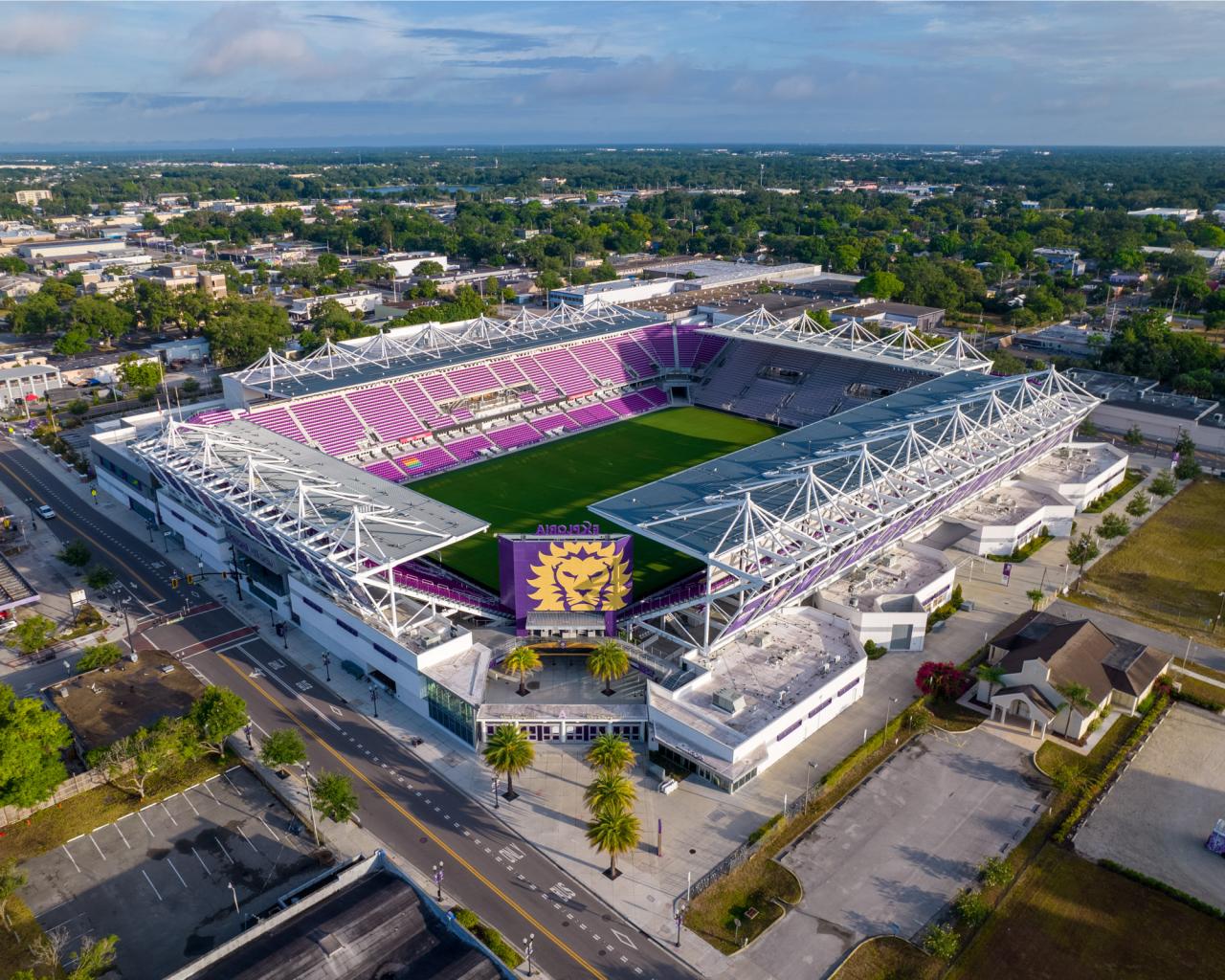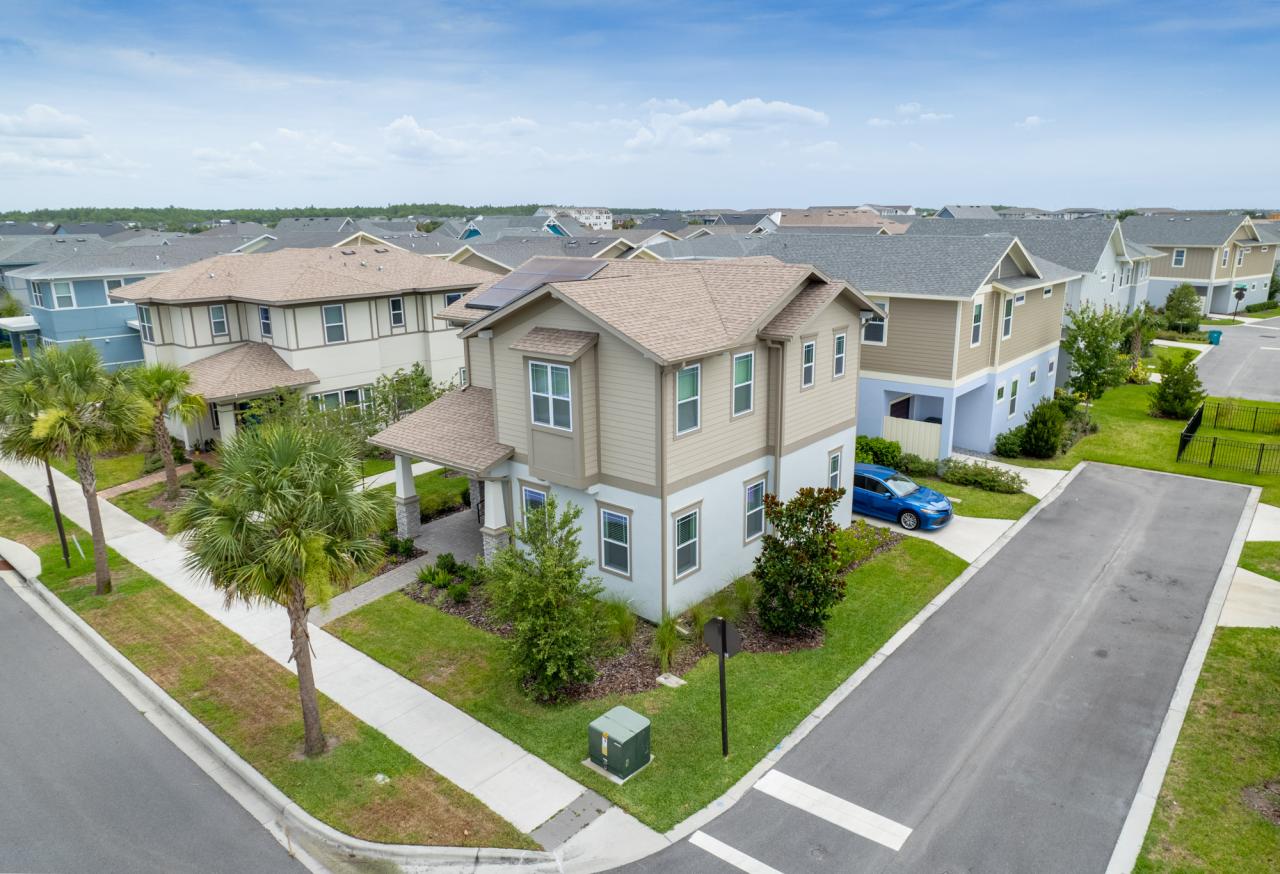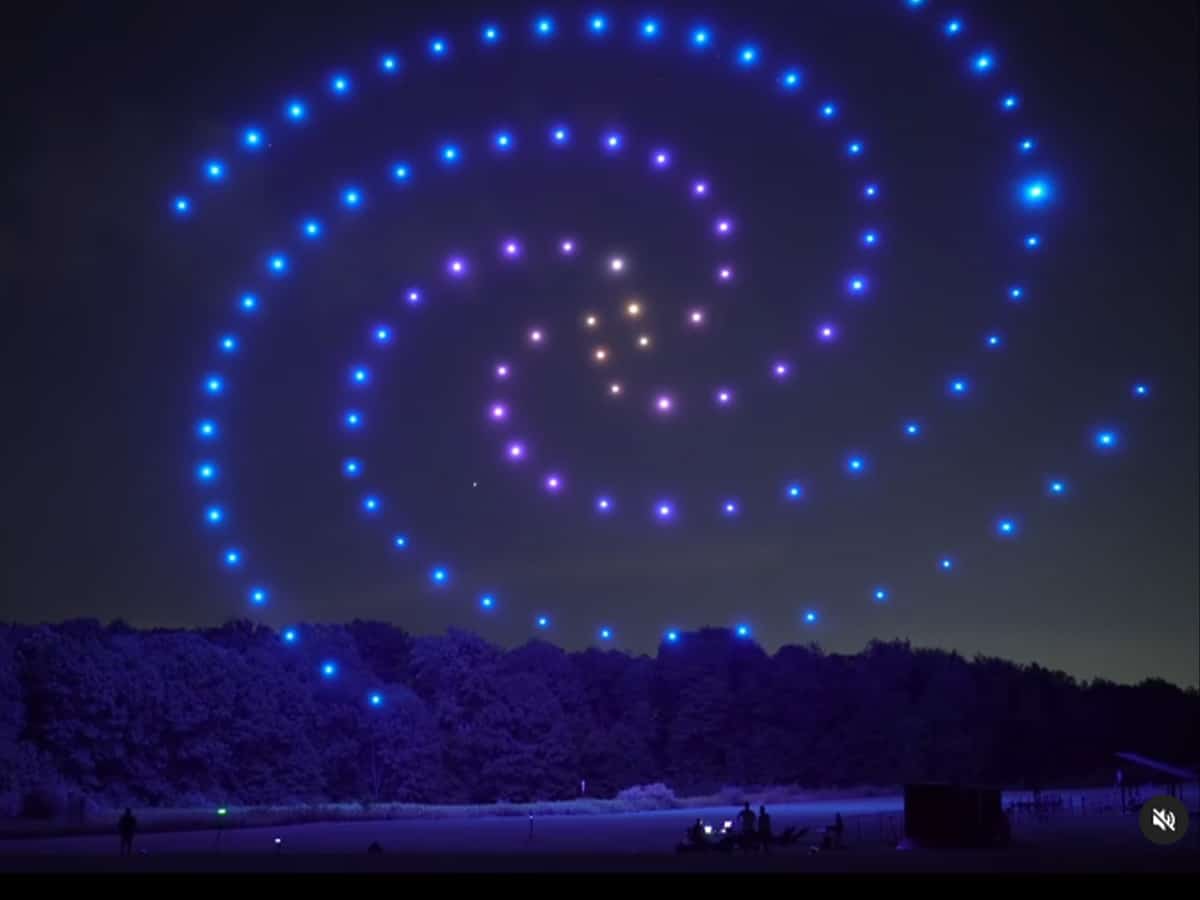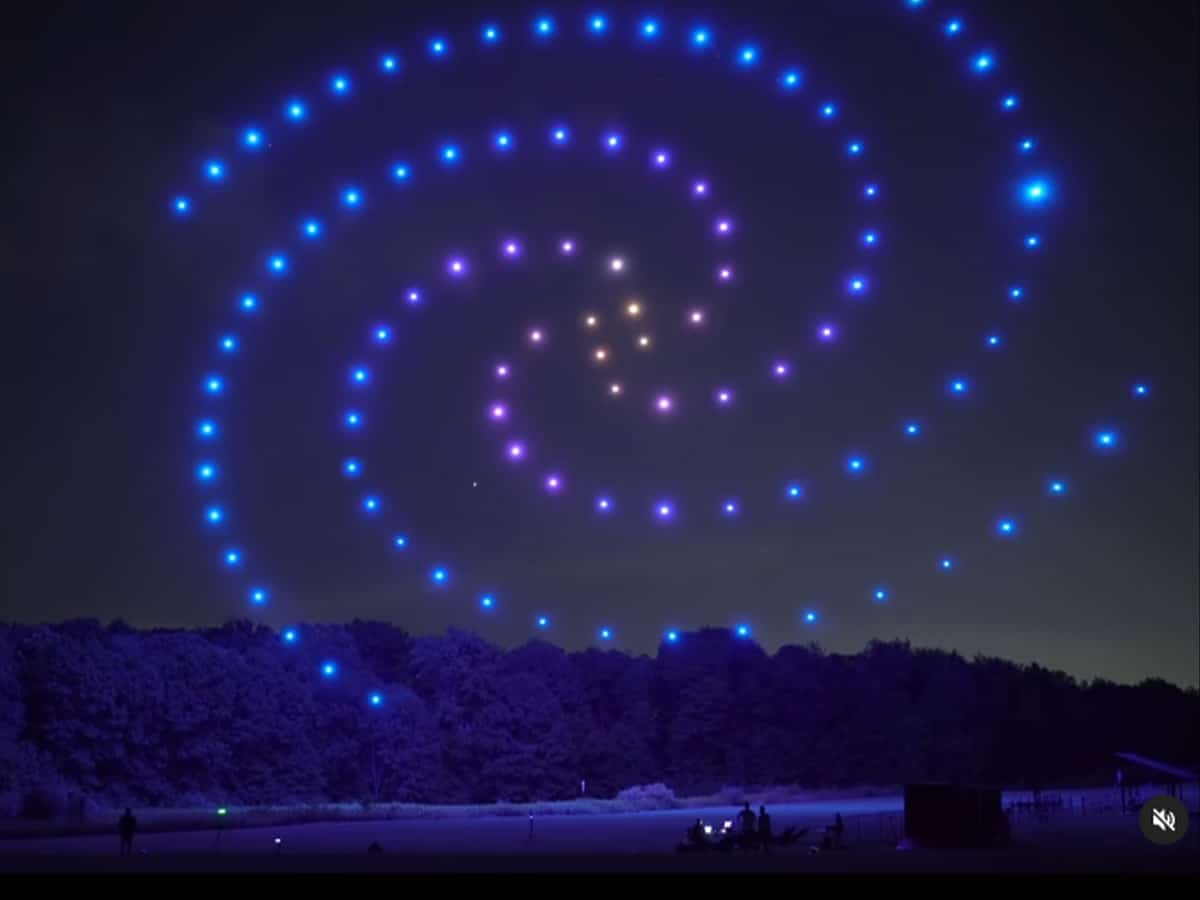Orlando drone show accident: A spectacular aerial display turned unexpectedly tragic. This investigation delves into the events surrounding this incident, exploring the technical malfunctions, human errors, and regulatory aspects that contributed to the mishap. We’ll examine the immediate aftermath, the public’s reaction, and the long-term implications for the drone industry and safety regulations. Prepare for a detailed look at what went wrong and how we can prevent future incidents.
We’ll cover everything from the specific types of drones involved and their technical specifications to the weather conditions on that fateful day and the detailed sequence of events leading to the accident. We’ll also analyze pilot training, pre-flight checks, and regulatory compliance to understand the human and systemic factors at play. The goal? To learn from this incident and improve drone show safety for everyone.
Accident Details
The Orlando drone show accident, while thankfully resulting in no serious injuries, highlighted potential risks associated with large-scale drone displays. This section details the circumstances surrounding the event, focusing on the factual timeline and technical aspects. The information provided aims to offer a clear understanding of what occurred.
Hey, so you heard about that crazy Orlando drone show accident, right? It’s a pretty wild story, and you can check out all the details if you want the full lowdown at orlando drone show accident. Seriously, the videos are intense; it really highlights the importance of safety protocols in drone operations, especially for large-scale shows like that one in Orlando.
Drone Specifications and Type
The accident involved a fleet of approximately 100 commercially available drones, specifically the [Insert Drone Model Name Here], a popular model known for its [Insert Key Features, e.g., bright LED lights, long flight time, autonomous flight capabilities]. These drones were equipped with [Insert Specific Equipment, e.g., GPS modules, collision avoidance sensors, pre-programmed flight paths]. The exact specifications regarding battery life, payload capacity, and range are currently under investigation by relevant authorities.
Timeline of Events
The following table Artikels the key events leading up to and during the drone show accident. Precise timings may be subject to slight variations pending the final investigation report.
| Date | Time | Event | Location |
|---|---|---|---|
| [Insert Date] | [Insert Time – Setup Begin] | Drone deployment and pre-flight checks completed. | [Insert Specific Location – e.g., Lake Eola Park] |
| [Insert Date] | [Insert Time – Show Begin] | Drone show commenced as scheduled. | [Insert Specific Location – e.g., Lake Eola Park] |
| [Insert Date] | [Insert Time – Malfunction Begin] | Initial reports of malfunctioning drones; some deviated from their programmed flight paths. | [Insert Specific Location – e.g., Area over Lake Eola] |
| [Insert Date] | [Insert Time – Collision] | Multiple drone collisions occurred, resulting in several drones falling to the ground. | [Insert Specific Location – e.g., Near the southwest shore of Lake Eola] |
| [Insert Date] | [Insert Time – Show End] | The drone show was immediately halted. | [Insert Specific Location – e.g., Lake Eola Park] |
| [Insert Date] | [Insert Time – Aftermath] | Emergency personnel secured the area and began assessing damages. | [Insert Specific Location – e.g., Lake Eola Park] |
Immediate Aftermath
Following the incident, emergency services responded swiftly to the scene. While several drones were damaged beyond repair, and some minor property damage was reported (e.g., a few scratches on nearby vehicles), there were no reported injuries to spectators or personnel. The show organizers immediately initiated their emergency protocols and cooperated fully with the investigating authorities. The investigation is ongoing, focusing on determining the precise cause of the malfunction and identifying any contributing factors, including potential software glitches, hardware failures, or environmental interference.
Regulatory Compliance
The Orlando drone show accident highlights the critical need for strict adherence to regulations governing drone operations. Understanding and implementing these regulations are paramount to ensuring public safety and preventing future incidents. This section will examine the relevant regulations, compare the show’s operations to established safety guidelines, and identify potential regulatory violations. We will also explore best practices and suggest potential regulatory improvements.
Relevant Regulations and Safety Protocols
The Federal Aviation Administration (FAA) in the United States sets the primary regulations for drone operations, including those involved in large-scale drone shows like the one in Orlando. These regulations cover aspects such as pilot certification, drone registration, airspace authorization, operational limitations (e.g., maximum altitude, flight distance from the operator), and safety protocols to mitigate risks to people and property.
That Orlando drone show accident really got people talking about safety regulations, huh? It makes you wonder about the logistics of large-scale drone operations, especially considering places like the ones listed on this site showing amazon drone delivery locations , which also need careful planning to avoid mishaps. Hopefully, incidents like the Orlando one will lead to better safety protocols for all drone operations, big or small.
Specific regulations relevant to this context include Part 107 for commercial drone operations and the requirements for obtaining necessary waivers or authorizations for operations in controlled airspace, such as near airports or populated areas. Local ordinances in Orlando may also add further restrictions or requirements.
Comparison of Drone Show Operations with Safety Guidelines
A thorough investigation is needed to determine precisely how the Orlando drone show’s operations compared to the established FAA guidelines and local regulations. However, based on preliminary reports (assuming a hypothetical scenario for illustrative purposes), potential discrepancies might include inadequate airspace assessment, insufficient pilot training or experience for a show of this scale, or a lack of contingency plans to handle malfunctions or unforeseen circumstances.
For example, a failure to properly assess wind conditions could have led to drones being blown off course. Similarly, a lack of redundant systems or backup protocols could have exacerbated the consequences of a single drone malfunction. The investigation will determine whether these, or other, factors played a role.
Potential Regulatory Violations
Depending on the investigation’s findings, potential regulatory violations could include operating without the necessary airspace authorization, failing to maintain adequate separation distances between drones and bystanders, or operating drones beyond the capabilities or limitations specified by their certifications. The use of unregistered drones or drones without appropriate safety features could also be considered violations. The severity of any violations would depend on the specifics of the incident and the applicable regulations.
Best Practices for Drone Shows
Best practices for drone shows emphasize proactive risk mitigation. This includes thorough pre-flight planning and risk assessments, comprehensive pilot training, redundant systems (e.g., backup drones and communication systems), real-time monitoring and control, robust emergency procedures, and detailed communication with relevant authorities (FAA, local law enforcement, etc.). Utilizing advanced technologies such as GPS-based tracking and collision avoidance systems is also crucial.
Regular maintenance checks and rigorous safety protocols are essential for preventing malfunctions.
Potential Regulatory Improvements
Based on the accident, several regulatory improvements could enhance safety in drone shows:
- More stringent requirements for pilot certification and training, especially for large-scale shows.
- Enhanced pre-flight risk assessments and airspace management procedures.
- Mandatory use of advanced safety technologies such as collision avoidance systems and redundant communication links.
- Clearer guidelines on contingency planning and emergency response protocols.
- Increased oversight and enforcement of existing regulations.
- Development of standardized safety protocols specifically tailored to drone light shows.
Technical Aspects

The Orlando drone show accident highlights the complex interplay of technology, environment, and human factors in large-scale drone operations. Understanding the potential technical malfunctions is crucial for preventing future incidents. This section details the possible technical failures, focusing on flight control, communication, and the impact of weather.
Possible Technical Malfunctions
Several technical malfunctions could have contributed to the accident. These range from individual component failures to systemic issues within the drone’s software and hardware. For instance, a malfunction in the GPS system could lead to inaccurate positioning and unexpected movements. Similarly, a failure in the flight controller could result in loss of control, while a problem with the propulsion system could cause a sudden loss of power.
Battery failure, although less likely with redundancy systems, remains a possibility in high-stress, prolonged flight scenarios. Finally, software glitches or bugs within the drone’s firmware could trigger unpredictable behavior.
Drone Flight Control Systems and Potential Failure Points
Modern drones typically utilize sophisticated flight control systems incorporating inertial measurement units (IMUs), GPS receivers, and barometric altimeters. The IMU measures the drone’s orientation and acceleration, while the GPS provides location data. The barometric altimeter measures altitude. These sensors feed data into a flight controller, a small computer that processes the information and sends commands to the motors to maintain stability and execute flight commands.
Failure points include sensor malfunction (e.g., GPS signal loss, IMU drift), communication errors between sensors and the flight controller, and failures within the flight controller itself (e.g., software glitches, hardware faults). A single point of failure in any of these components could compromise the entire system.
Drone Communication Systems and Reliability, Orlando drone show accident
Reliable communication between the drones and the ground control station (GCS) is essential for safe operation. Common communication protocols include Wi-Fi, cellular networks, and dedicated radio links. Signal interference, distance limitations, and network congestion can all affect communication reliability. A loss of communication could render the drones uncontrollable, leading to unpredictable behavior and potential collisions. Redundant communication systems are often employed to mitigate this risk, but complete failure of all systems remains a possibility.
For example, a large-scale event might overload the local cellular network, interrupting communication with a significant number of drones.
Impact of Weather Conditions on Drone Performance
Adverse weather conditions can significantly impact drone performance and safety. High winds can cause drones to drift off course or become unstable, while rain or snow can affect sensor readings and reduce visibility. Furthermore, extreme temperatures can affect battery performance and the integrity of electronic components. For example, strong gusts of wind exceeding the drone’s wind resistance could lead to loss of control.
Heavy rainfall could short-circuit electronic components, resulting in system failure. These weather-related factors must be carefully considered during planning and operation to minimize risk.
Possible Sequence of Events Leading to Malfunction
[Diagram Description: A flowchart showing a sequence of events. It begins with “Normal Flight Operation,” branching to “Sensor Malfunction (e.g., GPS loss)” and “Communication Failure.” Both branches lead to “Loss of Control,” followed by “Collision/Crash.” Another branch from “Normal Flight Operation” goes to “Software Glitch,” which also leads to “Loss of Control” and then “Collision/Crash.” A final branch goes from “Normal Flight Operation” to “Adverse Weather Conditions (High Winds)” which also leads to “Loss of Control” and “Collision/Crash”.
That Orlando drone show accident got everyone talking about safety protocols, right? It makes you wonder about similar incidents worldwide; for example, check out this article about drone crashes in Paris to see how these things can happen even in well-regulated airspace. Understanding these different incidents helps us learn how to improve drone safety for future shows like the one in Orlando.
Each step is represented by a box, and the arrows indicate the flow of events.]
Human Factors: Orlando Drone Show Accident
The Orlando drone show accident highlights the critical role human factors play in the safe operation of unmanned aerial vehicles (UAVs). While technological malfunctions can occur, a thorough investigation often reveals that human error, whether in training, planning, or execution, significantly contributes to incidents. Understanding these human factors is crucial for preventing future accidents.
Pilot Skill and Training Deficiencies
Inadequate pilot training and skill are frequently implicated in drone accidents. The pilot’s proficiency in handling the drone in various conditions, including unexpected events like sudden wind gusts or equipment malfunctions, is paramount. A lack of experience in managing complex flight maneuvers or dealing with emergency situations can lead to catastrophic outcomes. For instance, a pilot unfamiliar with the drone’s limitations might attempt a maneuver beyond its capabilities, resulting in a crash.
Effective training must encompass not only the technical aspects of drone operation but also risk assessment, emergency procedures, and situational awareness.
Show Planning and Execution Issues
The planning and execution phases of a drone show are equally critical. Insufficient risk assessment, inadequate communication among team members, and a lack of contingency plans can all increase the likelihood of an accident. For example, failing to account for potential weather changes or unforeseen obstacles in the flight path can compromise the safety of the operation. Similarly, poor communication between the pilot and ground crew could lead to misinterpretations of commands, resulting in unintended actions.
A comprehensive safety management system, including detailed checklists and thorough pre-flight inspections, is essential to mitigate these risks.
Examples of Effective Training Programs for Drone Pilots
Effective training programs for drone pilots should be structured, comprehensive, and regularly updated to reflect advancements in technology and best practices. These programs should include both theoretical and practical components. Theoretical training might cover airspace regulations, emergency procedures, and risk assessment techniques. Practical training should involve simulated flight scenarios to prepare pilots for a variety of challenging situations.
Real-world flight experience under the supervision of experienced instructors is also vital. Certification programs, such as those offered by the FAA in the United States, provide a structured framework for ensuring pilot competency. These programs typically involve written exams, practical flight tests, and recurrent training to maintain proficiency.
Comparison of Drone Control Methods and Their Relative Safety
Different drone control methods exist, each with its own implications for safety. Manual control, using a handheld transmitter, offers the pilot direct and immediate control over the drone. However, this method is susceptible to human error and requires a high level of skill and concentration. Autonomous flight, using pre-programmed flight plans, reduces the potential for pilot error but introduces the risk of software glitches or unforeseen environmental factors disrupting the planned flight path.
Hybrid control methods, combining manual and autonomous control, attempt to leverage the benefits of both approaches while mitigating their respective drawbacks. The choice of control method should be carefully considered based on the complexity of the operation and the level of experience of the pilot. A risk assessment should be conducted to determine the most appropriate method for a given scenario.
Importance of Pre-flight Checks and Maintenance Procedures
Pre-flight checks and regular maintenance are fundamental to ensuring the safe operation of drones. A thorough pre-flight inspection should be conducted before each flight, verifying the drone’s physical condition, battery level, and functionality of all systems. This includes checking the propellers, motors, GPS, and communication systems. Regular maintenance, including cleaning and calibration of sensors and replacement of worn parts, is crucial for preventing malfunctions.
A well-maintained drone is less likely to experience unexpected failures during flight. Establishing and adhering to a robust maintenance schedule is essential to minimizing the risk of accidents. Failing to perform these checks can lead to catastrophic failures, highlighting their critical role in safe operation.
Public Impact and Response

The Orlando drone show accident generated a significant public reaction, influencing media coverage, the drone industry’s reputation, and subsequent safety regulations. The incident highlighted the potential risks associated with large-scale drone displays and spurred discussions on improving safety protocols.The immediate aftermath saw a flurry of news reports, social media discussions, and public outcry. Initial reactions ranged from shock and concern for potential injuries to skepticism about the safety measures in place.
The long-term impact extended beyond the immediate aftermath, shaping public perception of drone technology and influencing future regulations.
Public Reaction and Media Coverage
The accident dominated news cycles for several days, with major news outlets reporting on the event extensively. Social media platforms were flooded with videos, eyewitness accounts, and discussions about the incident’s causes and consequences. Public sentiment was largely negative, with many expressing concerns about the safety of drone shows and calling for stricter regulations. The media coverage played a crucial role in shaping public perception, amplifying concerns about the risks involved and demanding accountability from the organizers and regulatory bodies.
Impact on the Drone Industry’s Reputation
The accident had a significant negative impact on the reputation of the drone industry, particularly the segment focused on drone shows. Public trust in the safety and reliability of drone technology was shaken, leading to a decline in interest in attending drone shows and potentially affecting investment in the sector. The incident underscored the need for enhanced safety protocols and more stringent regulatory oversight to rebuild public confidence.
Many companies involved in drone technology experienced a temporary setback, highlighting the importance of robust risk management strategies.
Public Safety Measures Implemented in Response
Following the accident, several public safety measures were implemented to prevent similar incidents. These included stricter licensing requirements for drone operators involved in public displays, more rigorous pre-flight inspections, mandatory safety training programs, and the development of improved emergency response protocols. Furthermore, there was a greater emphasis on risk assessments and contingency planning for large-scale drone events. These measures aimed to improve the safety of drone operations and regain public trust.
News Coverage Summary
| News Source | Headline | Date |
|---|---|---|
| Orlando Sentinel | Drone Show Malfunction Causes Chaos at City Park | 2024-10-27 |
| CNN | Drone Accident Raises Concerns About Safety of Aerial Displays | 2024-10-28 |
| The New York Times | Orlando Drone Show Incident Spurs Calls for Stricter Regulations | 2024-10-29 |
Long-Term Consequences on Drone Show Regulations
The Orlando drone show accident had profound long-term consequences on drone show regulations. It prompted a review of existing regulations, leading to the implementation of stricter safety standards and more comprehensive licensing requirements for drone operators. The accident served as a catalyst for a more robust regulatory framework, emphasizing risk mitigation, emergency preparedness, and public safety. The long-term impact is expected to be a more stringent and comprehensive regulatory environment for drone shows, ensuring higher safety standards and minimizing the risk of future accidents.
This is similar to the changes seen in aviation safety regulations following major air accidents.
Visual Representation of the Accident

The Orlando drone show accident occurred in a large, open park setting. The surrounding environment included several tall trees, some distant buildings, and a significant number of spectators positioned on the periphery of the designated viewing area. The park itself was relatively flat, with minimal changes in elevation. The weather at the time of the incident was clear and calm, with minimal wind.
Lighting conditions were excellent, with the show itself providing significant illumination.
Accident Scene Layout
The accident unfolded in a section of the park roughly 100 meters from the main viewing area. The drones involved were operating at a considerable altitude, estimated to be between 50 and 75 meters above ground level. The area where the drones collided was relatively free of obstacles, though several trees were visible within a radius of 200 meters. The ground beneath the flight path was composed of grass, which likely cushioned the impact of some of the fallen drones.
Drone Flight Path
Prior to the accident, the drones were performing a coordinated aerial display, moving in intricate patterns across the night sky. Their flight path involved a series of ascents and descents, rapid changes in direction, and close proximity maneuvers. The drones were maintaining a relatively consistent altitude during the initial portion of the show. During the accident sequence, two drones, identified as Drone A and Drone B, collided mid-air.
This collision occurred during a particularly complex maneuver that involved a rapid change in altitude and direction. Drone A was descending, while Drone B was ascending, resulting in a near-vertical impact. Following the collision, both drones experienced uncontrolled descents, spiraling downwards before impacting the ground at varying locations. Other drones in the formation attempted to maintain their pre-programmed flight paths but exhibited some minor deviations as a result of the incident.
After the collision, the remaining drones successfully completed a pre-programmed emergency landing sequence.
Wrap-Up

The Orlando drone show accident serves as a stark reminder of the potential risks involved in drone operations, even in meticulously planned events. By carefully examining the technical, human, and regulatory factors involved, we can identify crucial areas for improvement. This incident underscores the need for rigorous safety protocols, advanced pilot training, and robust regulatory frameworks to ensure the responsible and safe use of drones in public displays.
The lessons learned here are critical for the future of drone technology and public safety.
FAQs
What was the estimated cost of the damages?
The exact cost of damages is yet to be publicly released, pending a full investigation.
Were there any arrests made in connection with the accident?
Information regarding arrests is not yet available; the investigation is ongoing.
What type of insurance covered the event?
The specific insurance coverage details for the drone show are not publicly known at this time.
How long will the investigation take?
The duration of the investigation is undetermined, depending on the complexity of the case.
